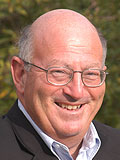|
|
|
<<< Previous speaker
|
next speaker >>>
|
Dave Thomas, Father of OTI, CEO of Bedarra Corporation

Dave Thomas has a wide spectrum of experience in the software industry as an engineer, professor, consultant, architect, executive and investor. Dave is founder and CEO of Bedarra Corporation; which provides virtual CTO and CEO, business mentoring and seed investment to emerging companies. Recently formed Bedarra Research Labs undertakes speculative research on applications of emerging software technologies.
He has many years of experience in structured documents including the design of laser printer controllers, early commercial applications of Tex. He has advised on the IBM B2B strategy, and is on the MS Customer Advisory Council and with OLL contributed to the SCORM elearning standard, and authoring tools. He is Chairman of Xia Systems, Online-Learning.com (OLL), and a director of Stilo/Omnimark, Bitflash, Amikanow and Synop and several other software companies.
Dave is best known as the founder and past CEO and president of Object Technology International Inc. (formerly OTI, now IBM OTI Labs) and led the commercial introduction of object and component technology. The company is often cited as the ideal model of a software technology company.
He was also the principal visionary and architect for IBM VisualAge Smalltalk and Java tools and virtual machines including the initial work on popular multi-language Eclipse.org IDE. OTI pioneered the use of virtual machines in embedded systems with Tektronix shipping the first commercial products in 1988. He was instrumental in the establishment of IBM's Pervasive computing efforts and in particular the Java tooling.
Dave is an adjunct research professor at Carleton University, and the University Of Queensland and is widely published in the software engineering literature. He is a popular humorous albeit opinionated keynote speaker. Dave remains active in various roles within the technical community including ECOOP, AOSD, Evolve, and Agile Development Conference, Agile/XP Universe and OOPSLA Onward. He is a founding director of the Agile Alliance and most recently a founder of Open Augment Consortium. Dave writes expert columns in Otland Online in Germany, and the Journal Of Object Technology in Switzerland where he also serves on the editorial board.
|
Presentation: "Actors, and the Forgotten Art of Modeling Concurrent Systems"
Time:
Tuesday 11:30 - 12:30
Location:
Archauz
Abstract:
In current talk on programming, programming languages and concurrency (and specifically the intersection of those), much focus is on how to make programs run fast and best utilize the given hardware, multicore computers, and server farms. That is all very good, and understanding how to do that is indeed an important engineering quest. However, ...
It seems that in our haste to be fast, we have forgotten the art of modeling. Some times we need to model a system which is by its very nature concurrent, and we need to express this understanding, so that we - as human beings - can comprehend and reason about its behavior. For these cases we need to intentionally model the concurrency. When the task at hand is not just a matter of parallellizing an otherwise sequential program, but expressing the interactive behaviors of systems that handle many things concurrently.
This is nothing new. In the mid-80's up to the mid-90's there was a lot of active research and development in so-called actor languages; a class of concurrent programming languages that target this problem space. Today, actor programming is starting to be used again, especially in context of the Scala programming language.
In this talk we will review the rationales and thinking behind actor languages, provide examples of actor programming models, languages, and draw the lines up to current programming models.
Presentation: "Maximum Value, Maximum Speed through Lean Thinking - How Business and IT can Collaborate"
Time:
Tuesday 16:15 - 17:15
Location:
Rytmisk Sal
Abstract: Faster, Better, Cheaper seems to always be the challenge in today’s business. Far too often the reactions is "it is easy, it is impossible" and debates begin about new technologies and practices rather than focus on "what most important and how can we delivery it".
Lean Software uses simple techniques and a little out of the box thinking which often enable solutions that actually do take less time and effort. We discuss several techniques which enable Business and IT to jointly envision solutions which optimize the delivery of applications. We provide real world examples of how these significantly closed the gap between business needs and IT delivery.
|
 |
| |



